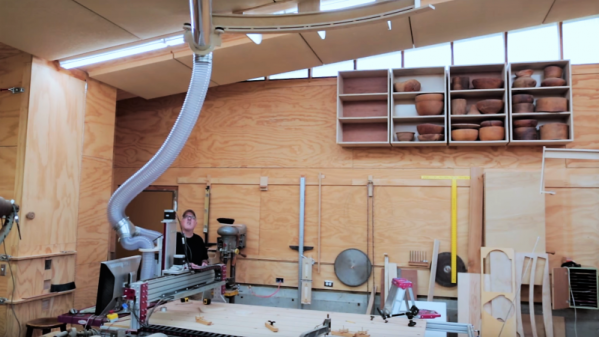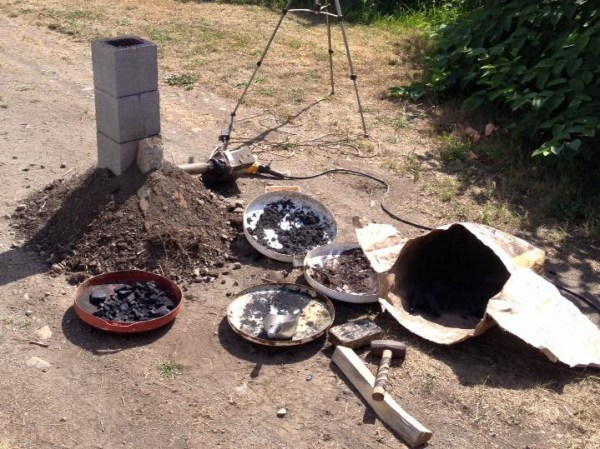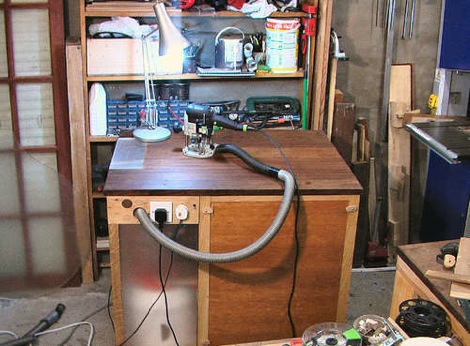Everyone loves firing up that CNC router for the first time. But if the first thing you cut is wood, chances are good that the second thing you cut will be parts for some kind of dust shroud. Babysitting the machine and chasing the spindle around with a shop vac hose probably isn’t why you got it in the first place, right?
Trouble is, most dust-management designs just don’t get the job done, or if they do, they obstruct your view of the tool with a brush or other flexible shroud. [Jeremy Cook] figured he could do better with this coaxial dust collector, and from the practically dust-free cuts at the end of the video below, we think he’s right. The design is a two-piece, 3D-printed affair, with a collar that attaches to the spindle and a separate piece containing the duct. The two pieces stick together with magnets, which also lets the shroud swivel around for optimal placement. The duct surrounds the collet and tool and has a shop vac hose connection. In use, the vacuum pulls a ton of air through small opening, resulting in zero dust. It also results in the occasional part sucked up from the bed, so watch out for that. [Jeremy] has published the STL files if you want to make your own.
We’re pretty impressed, but if you still feel the need for a physical shroud, check out this shaggy-dog design that seems to work well too. Or you could just throw the whole thing in an enclosure.
Continue reading “Custom Coaxial Dust Collector Makes CNC Router A Clean Machine”















